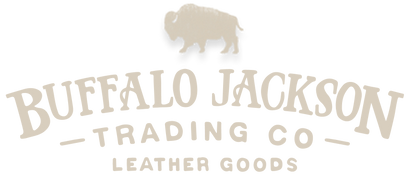Your Cart is Empty
You are €99,00 away from free shipping!
Your Cart is Empty
You are €99,00 away from free shipping!

“Man is a shrewd inventor, and is ever taking the hint of a new machine from his own structure, adapting some secret of his own anatomy in iron, wood, and leather, to some required function in the work of the world.” – Ralph Waldo Emerson
It is strange to think that leather should still be such a demanded commodity in an age of microprocessors and carbon fiber composites. Perhaps it has survived through the eras because it is such a great example of manly sensibility and resourcefulness: We kill an animal, eat it, but then respect it enough to wear or make use of its hide. And, we do this with such splendid craftsmanship as to be considered an art-form, a piece of history, even a statement of self-expression, from the rebellious rocker in a black leather jacket, to the man honoring his heritage by carrying his grandfather’s whiskey leather wallet.
It also stands as a great achievement against the unbending force of nature, for leather resists its making and must be worked into a fabric. Thus, once again man has used nature to survive alongside nature, using it to his own advantage, becoming not only the supreme hunter but also something of a partner with the land and the wild in which he roams.
Unlike the other manly fabrics we discussed, leather is as old as any remains of humans we have ever uncovered. Tools for scraping, shaping, and hanging leather have been discovered in every epoch known to us. That isn’t to say that many advancements haven’t been made over the years, but though we have found ways to process leather more efficiently, we still desire that old, bronzed, classic look that seems to never go out of style.
There are a number of ways to take a hide through the tanning process. In the Appalachians, and all over the early countryside of America, the process was limited to what could be found relatively easily. If you wanted a hairless leather, which you generally did, there was one sure way that worked to get the hair off. Once the hide was taken off the animal, and the flesh scraped as clean as possible, you would wet the hide and cover the flesh side with ashes. Not hot ashes, just cool ashes from the fireplace. After a few days you would go back and give the hair a pull, and when it came out easily you could simply scrape it off.
The tanning process generally involved using bark cut from various trees. Chestnut bark, when it was around, was used to produce a dark, coffee-colored tan, while White Oak bark was used when a more yellow result was desired. In the spring, or whenever the sap was up, bark would be stripped from the trees, chopped up, and placed in a large vat of water to soak the skin. Depending on the size of the hide, the process of soaking would take anywhere from a few weeks to several months. A cow hide, for example, might be left in a vat from fall until the next spring.
Once the tan was set in, the hide was then removed, stretched, and dried. In order to gain pliability, the leather would be rolled and bent until the right amount of elasticity was achieved.
Though leather is now produced on a much larger scale, we still expect it to maintain that rugged color and unique appearance from the days of old, as well as the durability necessary for a lifetime of use. That durability may be the distinguishing factor between the many types of leather goods produced today. It is something that can be determined almost immediately. When a man holds a quality leather briefcase bag or messenger bag in his hands, he knows that it is going to outlast him.
Whether you are slipping on a new pair of leather boots or a leather jacket, or throwing a full leather briefcase bag over your shoulder, know you are partaking in a tradition that is as old as mankind itself. You are benefiting from the many hands over many generations that have cut and dyed and rolled and fought nature into submission, or at least cooperation. Leather has enrobed knights, harnessed wolves, carried the cowboy, and made many-a-arrow quiver. When you are looking for that new leather good, make sure you take it seriously and give it the respect it deserves. It’s a lifetime investment that once had a life of its own.
Orders shipped to Canada may be subject to import duties, tariffs, and taxes charged by Canadian customs. These fees are not included in our prices or shipping costs. You will be responsible for any additional charges upon delivery. Please review local customs regulations before placing your order.

